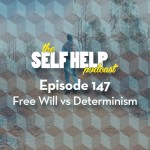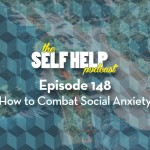How to Combat Social Anxiety
The neuropsychology of anxiety – Worry or Fear?
There is, I feel, some confusion about anxiety and its sibling panic attacks. I’d like to try in this blog and explain a bit about how the brain works, emotion and the appropriateness of different forms of therapy.
At a scientific level our understanding of neuropsychology and therefore our understanding of the neuropsychology of anxiety has come on leaps and bounds. However at a therapeutic level sometimes we are lagging behind leading to inappropriate therapies and failed clients.
I experience this confusion about ‘what is anxiety’, is also shared by therapist who fail to see the difference between our emotional self and our cognitive self. Leading to inappropriate therapy. Cognitive therapy is great and highly effective for people suffering cognitive problems but fails totally when used for emotional issues. I will explain.
Our human brain is different to all other mammals and primates in that we have developed the higher cortex that gives rise to cognitive function, including speech, language, reasoning and self awareness. This we may term the “New Brain” and is the result of millions of years of evolution, if there is truly a difference between humans and other hominids this it. The “Old Brain” shared with many other species (that is also the result of millions of years of evolution), is dominated by the amygdala and the brain stem. The difference between these two parts of the brain is simply the difference between worry and fear.
Fear Based Anxiety is emotional
Fear is an instinctual response, often a reflex, in the amygdala of the old brain that may lead to the physical, often violent or, fight and flight, flee responses that are activated in the brain stem. This tends to be highly emotional, often below awareness and may be triggered by sounds, smells, colours and so on. When people have an old brain anxiety attack it is a fear reaction and they will appear temporarily out of control. Once they have calmed down and the cognitive new brain is back on line they may be filled with remorse, shocked and horrified by their instinctual behaviour.
The amygdala is a dual almond shaped organ, one in either hemisphere of the brain though usually termed in the singular. The difference between the two amygdala’s, has not yet been studied in the west, is in Ayurvedic neuropsychology recognised as a part of our intuitive function, that sense of knowing without knowing why we know. As such its function is both above and below our awareness. When it is functioning above our awareness we call it intuition. When it functions below our awareness we see it as the primal response of instinct. This is where we process fear, yet we may never understand why we are afraid.
Worry Based Anxiety is cognitive
The anxiety experienced in the new cognitive brain is completely different to primal amygdala responses in that it is experienced as a reasoned response based in logic. The reasoning and the logic may, in reality be faulty, but is experienced by the person as factual. People will say “it is a known fact that…” when it is nothing of the sort. Worry based anxiety comes from the person not living in the present moment. They have projected themselves forward into ideas and experiences that may never happen but they are living them in the present as though they have. The tools of worry based anxiety are obsessing, which may lead to obsessive compulsive disorder or OCD, rumination, dog with a bone syndrome where we cannot let it go and go over and over the same issue.
In Ayurveda
Worry anxiety in the cognitive cortex is seen as part of the process of the imagination. People with a poor imagination do not get worry anxiety because they have difficulty imagining negative futures to become anxious about. Cognitive anxiety is dealt with by Tantric therapy, which is not all about sex it is about dealing with and controlling the imagination. Worry in the amygdala is dealt with in the Raja therapy.
Tantric therapy is based in using visualisation to create future images that are positive and do not have the worry attached to them. Raja based therapy is mindful relaxation and meditative practice that reduces the levels of stress hormone in the body system reducing the instinctual feelings of fear.
Cognitive Behavioural Therapy (CBT)
Over the years I, and many other therapist, have a stream of people presenting with emotional anxiety who will state how they have had CBT for their anxiety and how it worked really well. My comment is what worked well and what’s changed now?
My theory is someone presents for therapy with amygdala based emotional anxiety. Because therapy is awash with CBT practitioners the patient will almost certainly see a CBT therapist who uses their learned tools for dealing with cognitive anxiety. What happens is that the therapist uses a set of cognitive exercises that suppress the patients fear based emotions. It is as though they force in a cork to trap the emotions in a bottle just like champagne. Because the emotions have not been processed or resolved then over time the emotions gradually push the cork out of the bottle and the patient ends up just where they began with emotional anxiety.
Don’t get me wrong I am not against CBT, just the way that it is misused. The bottom line is cognitive therapy for cortex based worry anxiety and emotional therapy for amygdala based fear anxiety. The trick is that you need to know the difference.
If your anxiety if based in logical reasoning seek out a cognitive therapist they will be great for you.
If your anxiety is fear based find a therapist skilled in emotional work they maybe psychodynamic, cognitive analytical (CAT), Mindfulness based stress reduction (MBSR), Mindfulness based therapies and you will get what you need.
Most importantly none of us need to suffer anxiety, if you do then please do something about it.
Take care and be happy
Sean X



Trackbacks & Pingbacks
[…] Sean wrote a blog post on this subject. Have a read… […]
Leave a Reply
Want to join the discussion?Feel free to contribute!